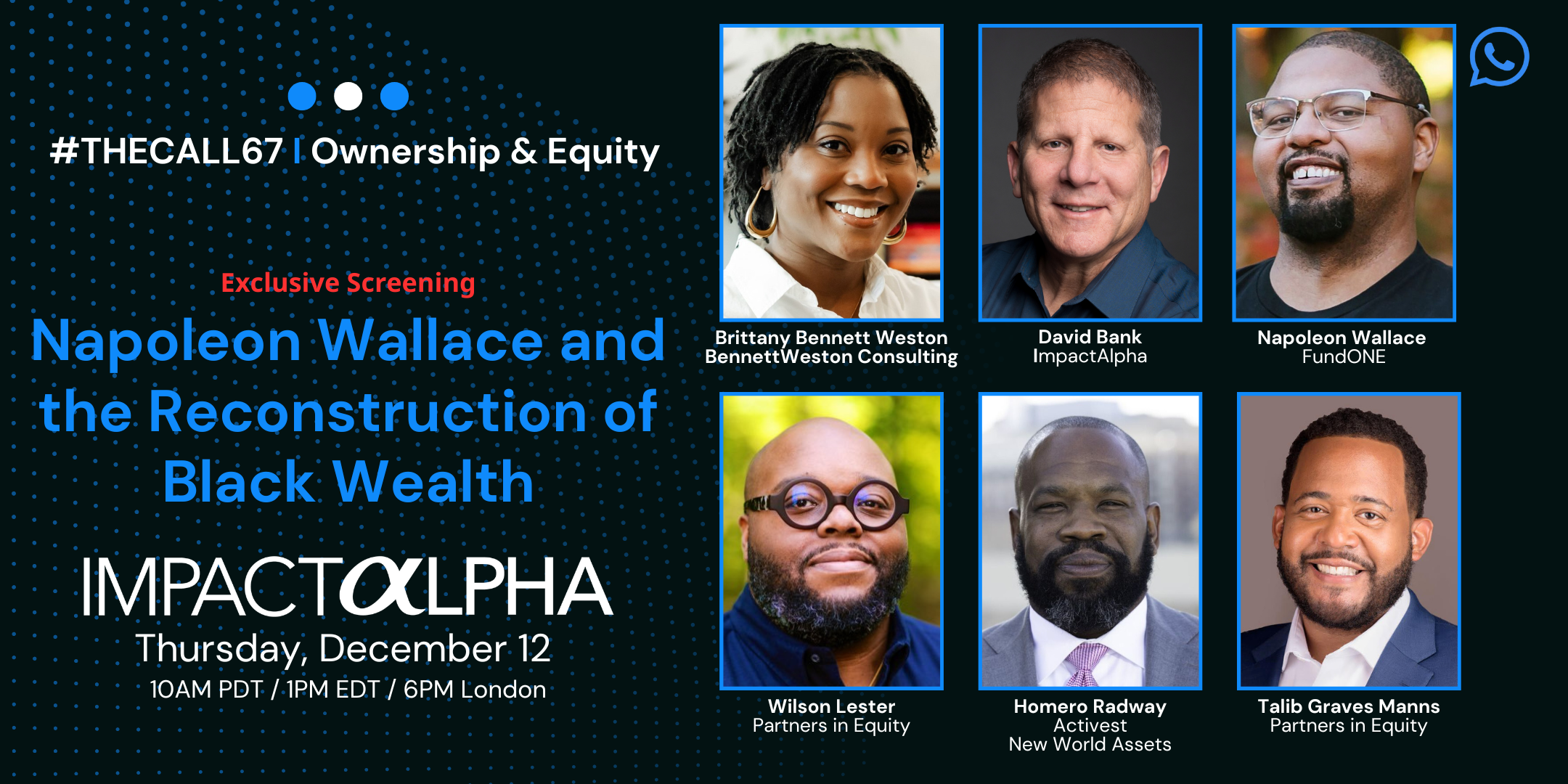For those challenging a strong incumbent or powerful status quo, victory starts where your opponents are not looking.
To win, insurgent candidates like Alexandria Ocasio-Cortez and Stacey Abrams knew they needed to run more creative and resourceful campaigns than their competition. Like community organizers, AOC and Abrams proactively engaged communities that had been intentionally marginalized; they did not just seek their votes, but sought to authentically enfranchise and empower these communities.
Impact investing exists within a similarly dominating and inequitable paradigm as traditional politics with the goal of profit-maximization regardless of social impacts.
To better disrupt and transform the financial system, we must think more creatively about how overlooked stakeholders “vote” and build a movement that enfranchises and empowers everyone – welcoming and activating those directly impacted communities that are not currently aware or involved with impacting how investments are made.
Lived experience
Last month, I finished another semester teaching “Capital for Good: Finance, Investment and Social Justice,” to MPA students at The City College of New York (CCNY). Since 2018, I have taught a variety of workshops and courses around the country at the intersection of impact investing, social justice and empowerment.
By design, I have sought out or curated classrooms that are more racially and socioeconomically diverse than my typical experience in the field, whether negotiating investments, observing investment committees or attending industry conferences. I chose to teach at CCNY – founded in 1847 as the first free public institution of higher education in the United States – because its student body, similar to the broader CUNY system it is a part of, predominantly serves working and middle class students of color.
Students’ initial concerns about taking my class stem from their personal experience as children of working class immigrants, where “the only financial activity I was exposed to was opening a checking account,” or feeling like “no one from my community understands or talks about how we might actually have power over investment decisions that impact us.”
Equally tragic is when students have shared that, in the past, they have not asked for clarification or support around learning financial and investment terms, out of fear and shame that they would be ridiculed.
I designed a class that deliberately accommodates and amplifies their backgrounds so they can honestly see themselves in this field. I invite progressive people of color working in the field to join us in class and translate jargon into relatable components. I run the class like I would lead a team at work, with aspirational standards and assignments that I myself complete on a day-to-day basis. And I try to coach my students beyond their fears, repeatedly emphasizing that not only can they learn to invest for impact, but their unique lived experiences may make them even better.
Despite their initial concerns, students who start the semester saying “I have never heard of any of this,” often develop a strong curiosity to not only learn more about investing for impact, but ask for ways that they can become more active participants in shifting investment structures, deal terms and decision-making tables.
By mid-semester, students have let me know that they “brought up last week’s class at my grandmother’s 90th birthday party” and “started a discussion with my family about whether the pension system we were in might be investing in things that contribute to gentrification.” By the end of the semester, they eagerly take on the unfamiliar role of an institutional asset owner, designing a 100% mission-driven endowment.
Some of the best questions I have ever heard come from these students: how should we think about restructuring a program-related investment if an investee hits a roadblock; how can venture capital funds provide non-financial supports to BIPOC startups; and when we talk about ESG and public equities, if we divest, what/where have we gained and lost power and influence?
As a field, we are leaving so much talent and impact on the table by not reaching out to, enfranchising and activating thousands of values-aligned allies like my students. Their lived and learned perspectives, if properly honored and integrated, could fundamentally transform the face, culture and power of impact investing.
Activating talent
Going forward, I hope that all colleges and universities that have “increasing social impact” as part of their missions, consider exposing their students to impact investing and the power of capital markets. Learning about investments, given their undeniable impact on society, cannot only be for business schools.
Across the country, schools have joined the conversation, and many instructors are part of the Impact & Sustainable Finance Faculty Consortium. But we need more students of social work, sociology, design, engineering and science to get involved.
Regardless of academic or professional background, when explained as another way to “mobilize significant resources for good”, almost everyone I have met focused on improving society finds a way to add the potential power of investments to their growing toolboxes.
For philanthropies, building and diversifying the infrastructure of the impact investing field requires more passive (dynamic, massive open online courses) and active (apprenticeships or fellowships that provide investment training) learning opportunities tailored for new audiences.
The current slate of options, like white papers, webinars and conferences, can be inaccessible (due to jargon and price) and intimidating to people who are new to the space. I have heard so much demand from people around the country for this information, but also persistent challenges in accessing opportunities to learn and apply their insights. I draw inspiration from community organizers, popular educators and designers for how to reach those with different backgrounds and workflows than my own.
And for investors, integrate frameworks like Due Diligence 2.0 when selecting managers, and go beyond traditional diversity metrics like race and gender. If we do not consider and value applicants’ socioeconomic status, lived experience, and lean into “creative hires,” so much of the potential I see each semester will remain untapped and disenfranchised. Programs like Mission Driven Finance’s Community Finance Fellowship and the Just Economy Institute understand this.
So much of finding deals and delivering outsized returns (both social and financial) rests on differentiation, which we can improve by thinking about the “who” more expansively.
Eric Horvath is an adjunct professor at The City College of New York’s Colin Powell School for Civic and Global Leadership, where he teaches in its MPA program. He is also the director of impact investments at Common Future.












